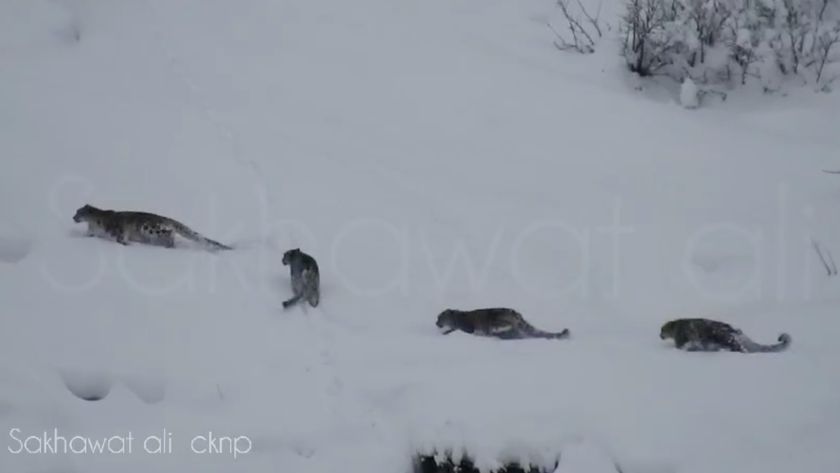Star-Patterned Tortoise Could Die Out in 20 Years

A tortoise that wears a brilliant yellow star pattern on its back and lives in Madagascar is rapidly nearing extinction due to poaching for its meat and the illegal pet trade, a team of biologists reports today.
The radiated tortoise (Geochelone radiata) could die out within the next 20 years unless drastic conservation measures are taken, say biologists from the Turtle Survival Alliance (TSA) and Wildlife Conservation Society (WCS).
The tortoise, whose carapace reaches a length of 16 inches (41 centimeters), weighs up to 35 pounds (16 kilograms) and is considered one of the most beautiful tortoises in the world, according to the Smithsonian National Zoo. Its legs, feet, and head are yellow except for a black splotch on top of its head. Yellow lines radiate outward from each dark plate on its domed shell.
The team recently returned from field surveys in southern Madagascar's spiny forest, where the once-abundant tortoises occur. The team found entire regions devoid of tortoises. Local people told the team that armed bands of poachers had taken away truckloads of tortoises to supply open meat markets in towns such as Beloha and Tsihombe. Poaching camps have been discovered with the remains of thousands of radiated tortoises, and truckloads of tortoise meat have been seized recently, the team says.
"The rate of hunting of radiated tortoises is similar to the hunting pressure on American bison during the early 19th century, where they were nearly hunted to extinction when they once numbered in the tens of millions," said Brian D. Horne, turtle conservation coordinator for the WCS's Species Program.
The tortoises once numbered in the millions across a vast swath of the southern portion of the island nation.
One of the most troubling trends is that poachers are now entering protected areas to collect tortoises and the staff there are poorly equipped to patrol and protect populations, the biologists say.
Sign up for the Live Science daily newsletter now
Get the world’s most fascinating discoveries delivered straight to your inbox.
The team found the situation is exacerbated by several factors, including:
- Extreme drought, which has resulted in diminished agricultural production and increased poverty, which leads people to tortoise hunting for survival;
- Enforcement action is often days away so that local officials can't stop poachers;
- Severe habitat degradation, due to burning and clearing for agriculture, has made the spiny forest the most endangered forest type in Madagascar, the fourth largest island in the world;
- Current political instability has resulted in an increased open access to natural resources and illegal pet trade.
The researchers say the radiated tortoise can still "make a living" and survive in this degraded habitat, but the animal can't survive the current threat of wholesale collection for food markets. Community mobilization linked to sustainable habitat protection is needed to save this unique critically endangered species, they say.
- 10 Species You Can Kiss Goodbye
- Top 10 Species Success Stories
- Amazing Animal Abilities












